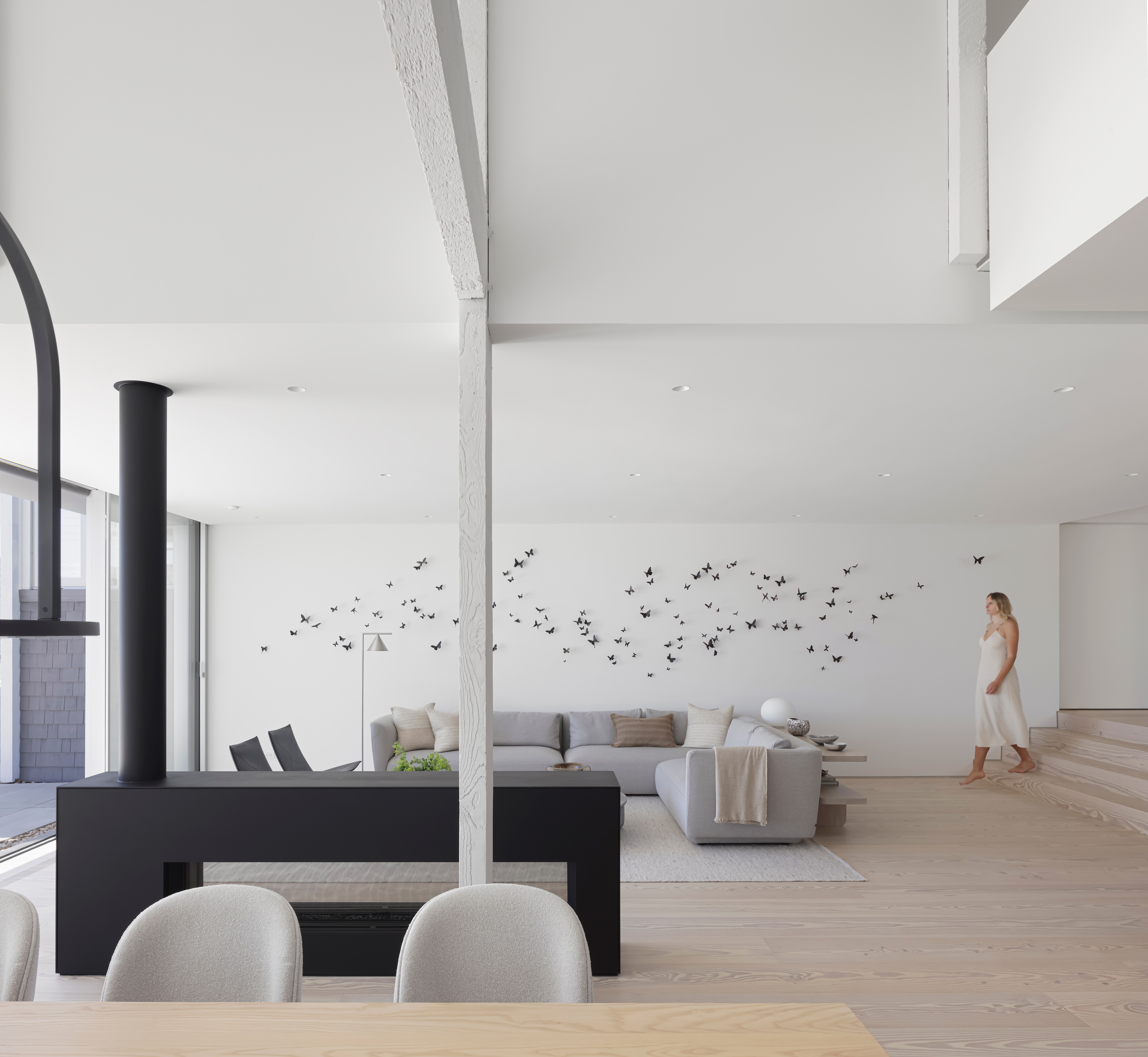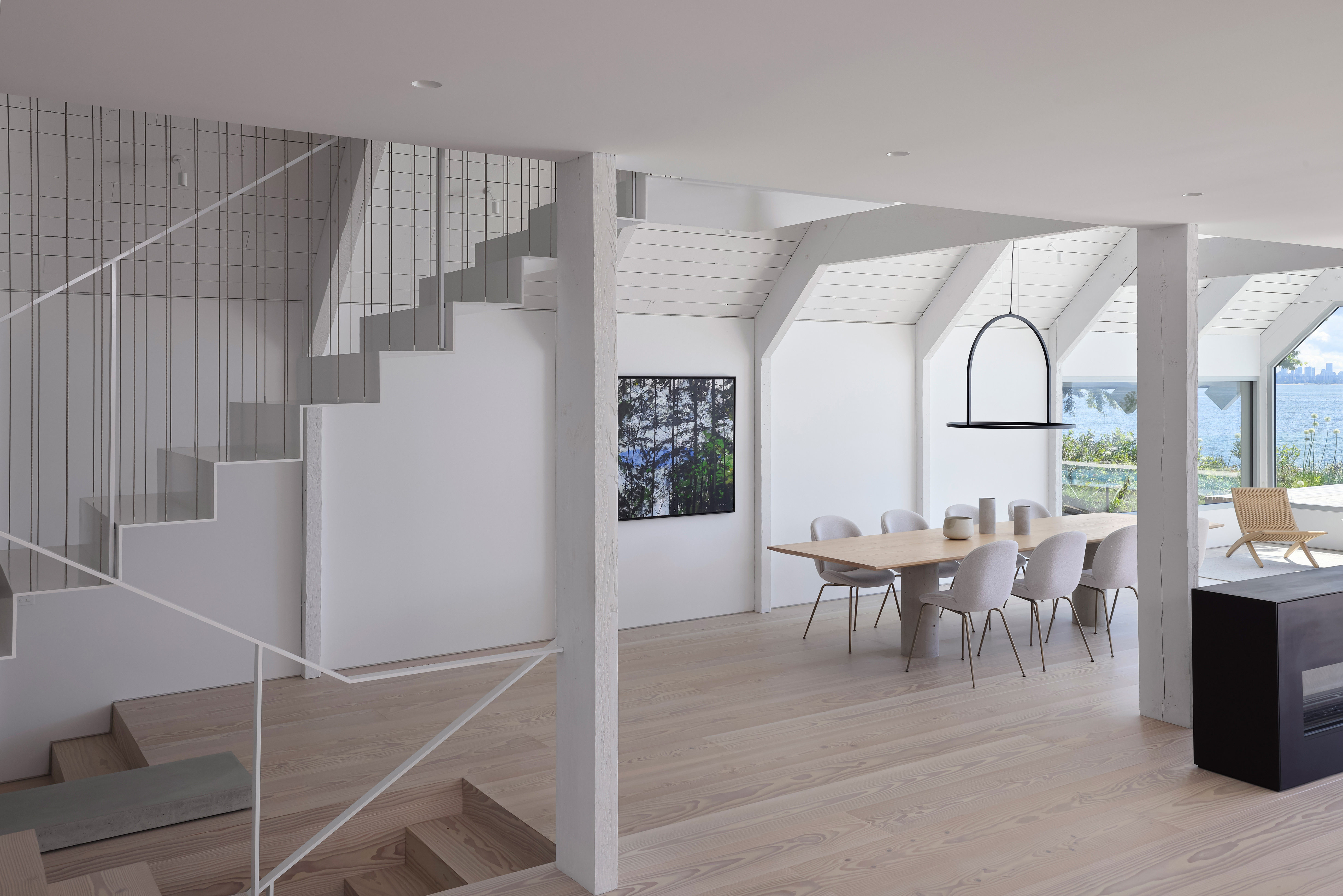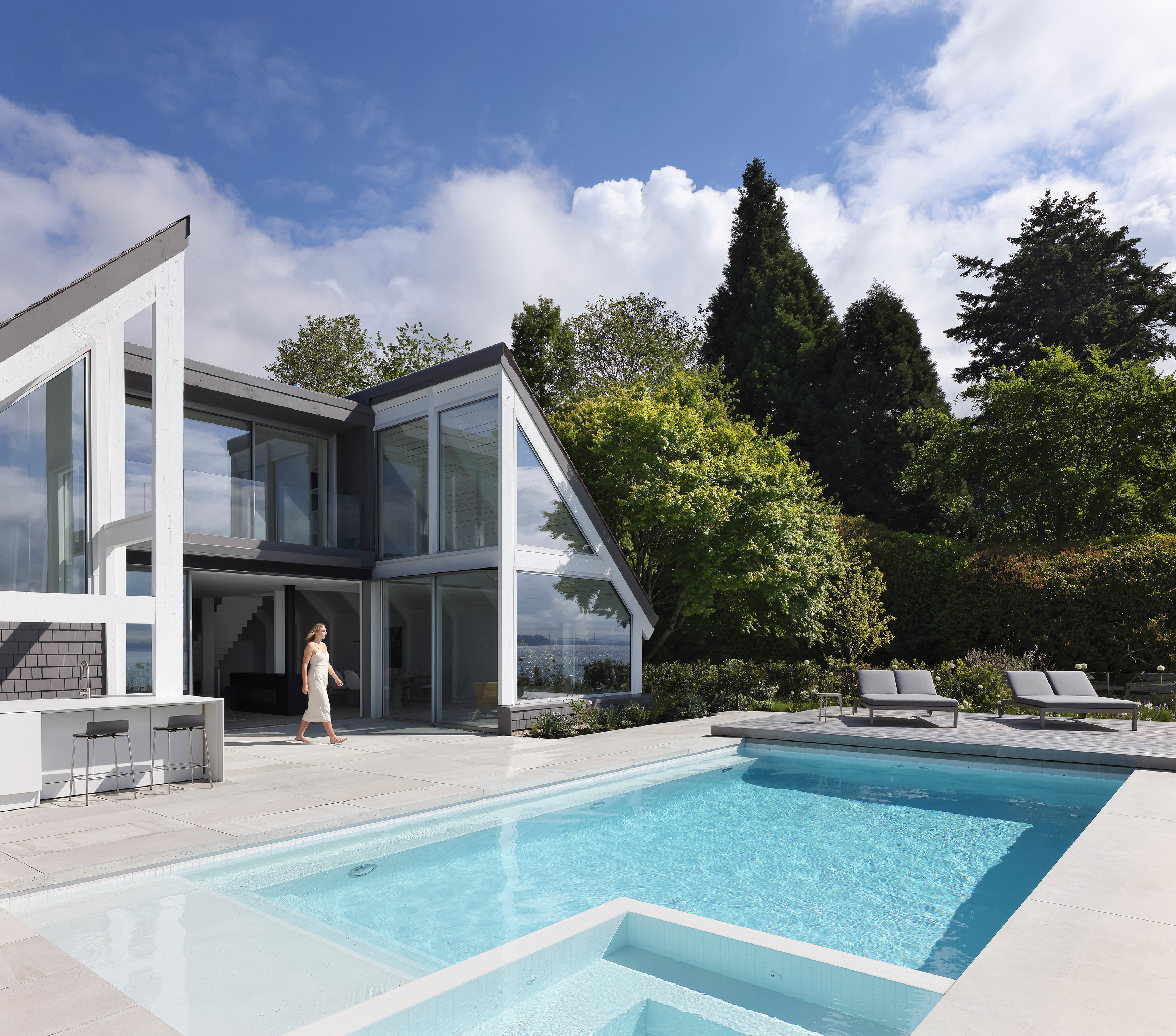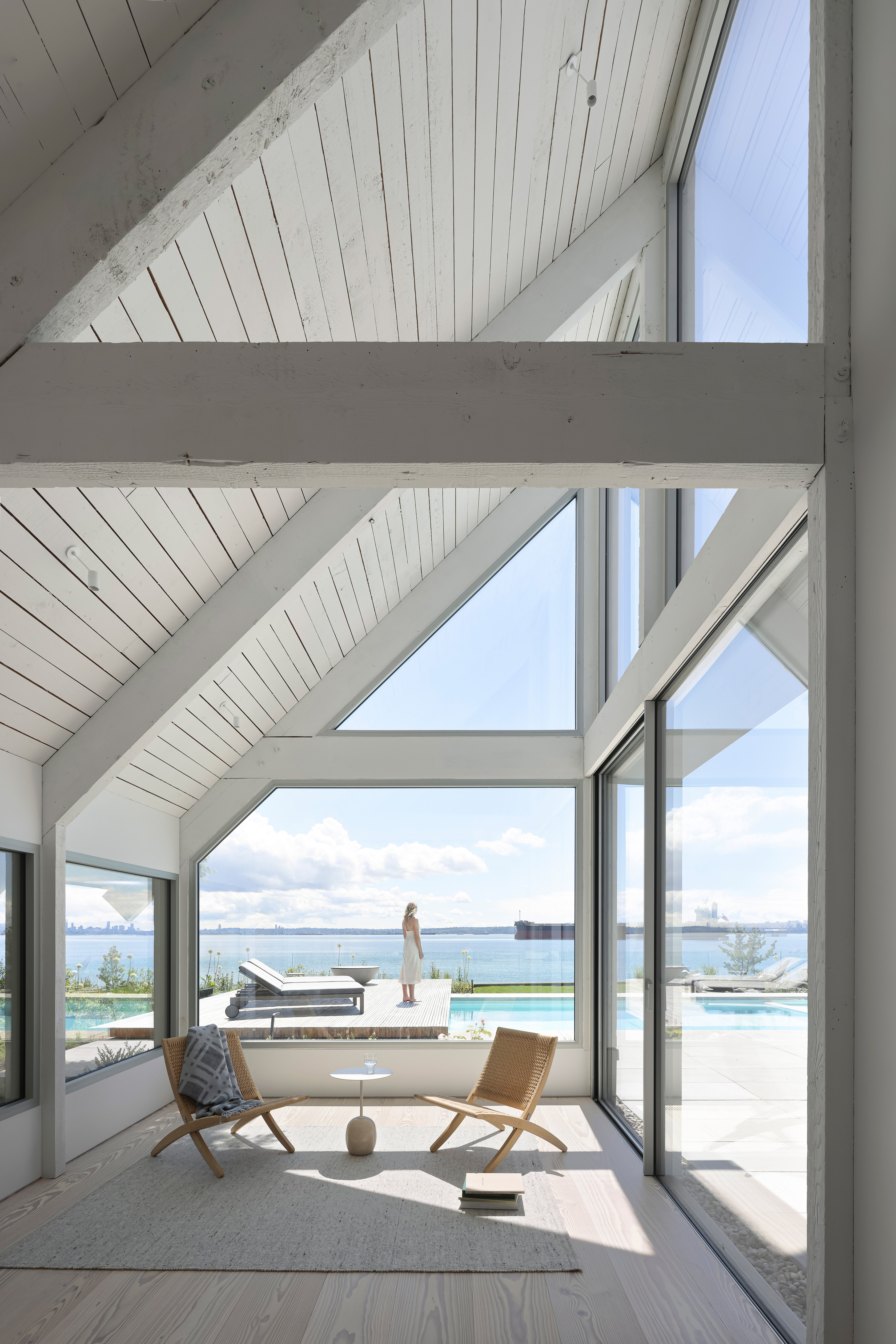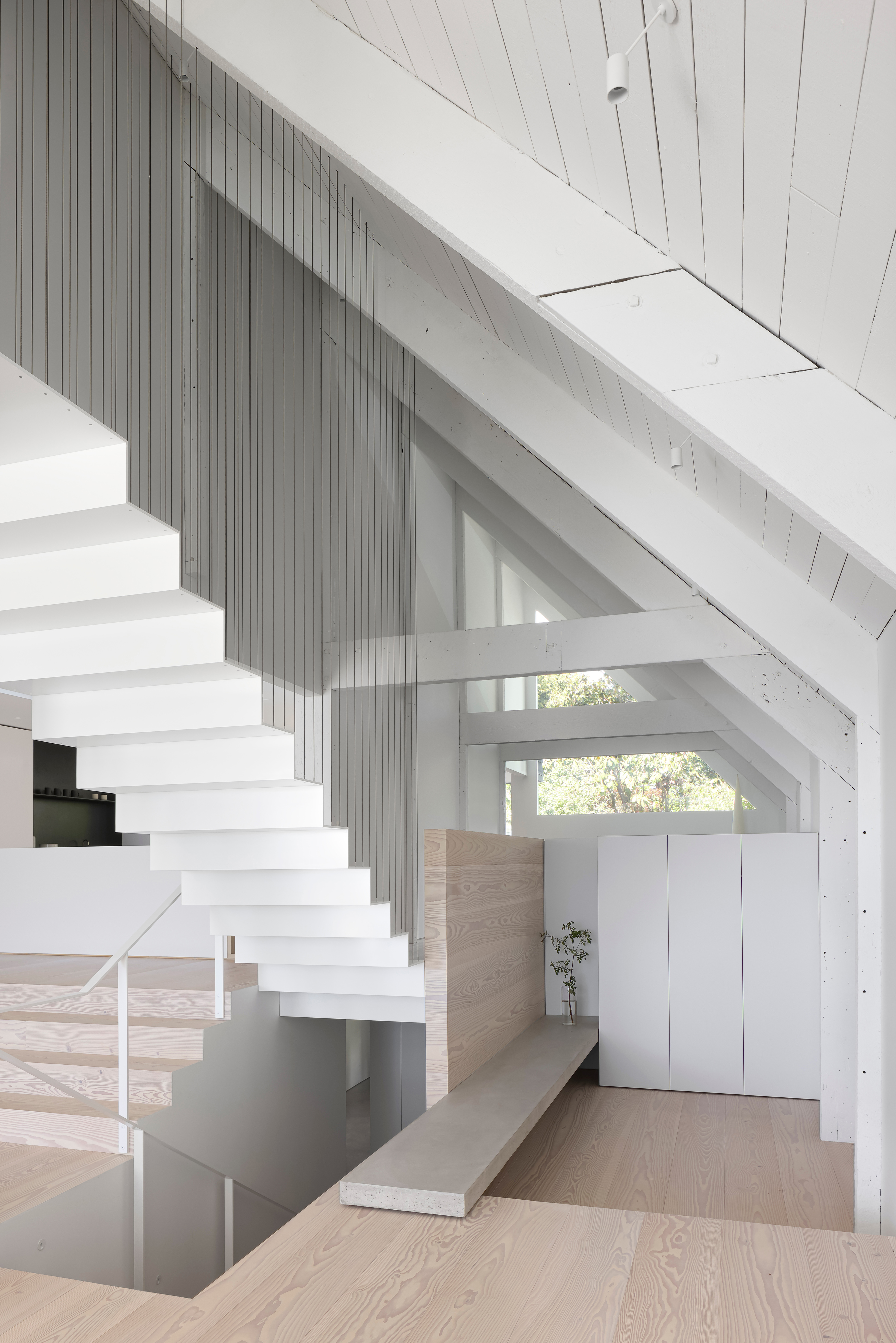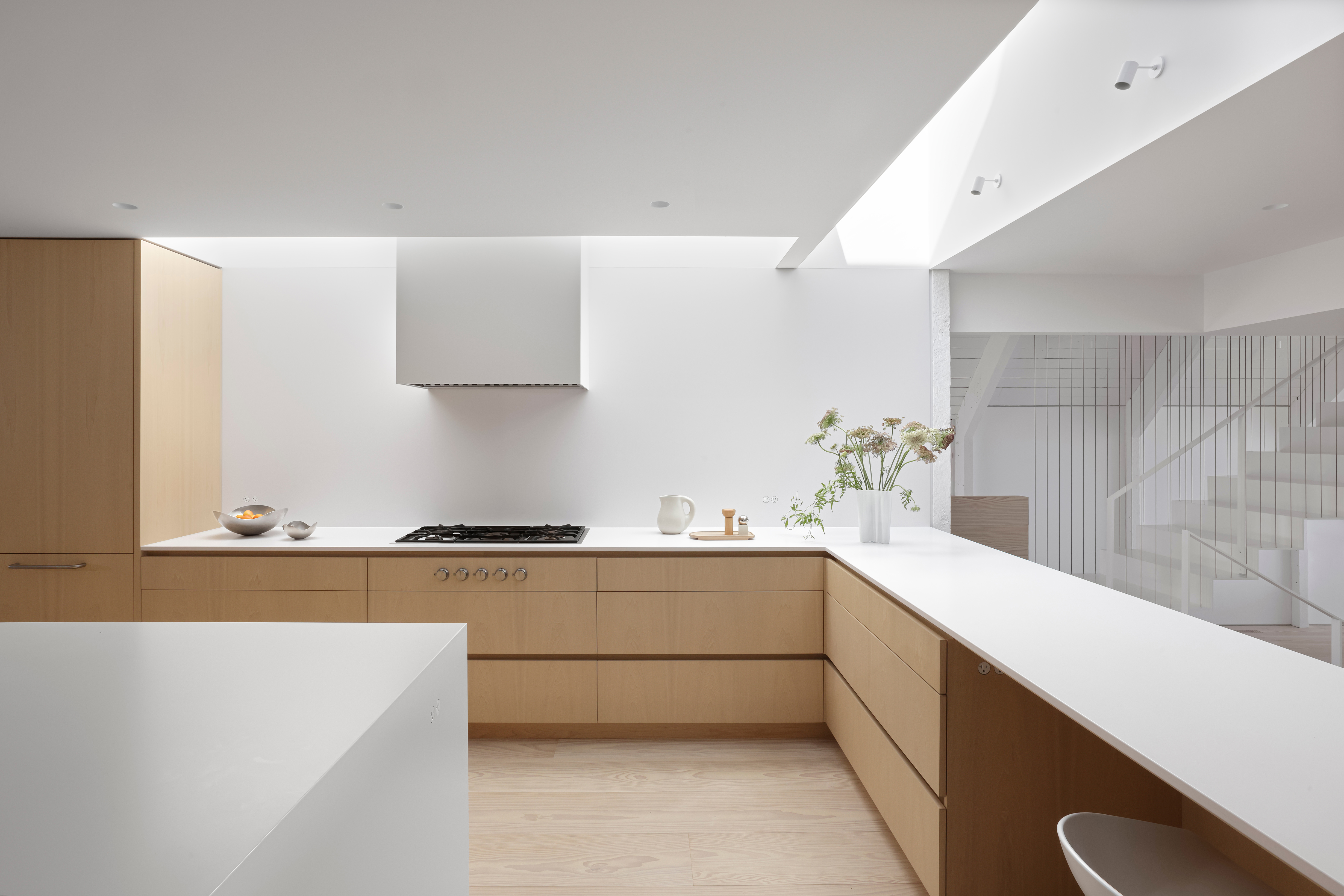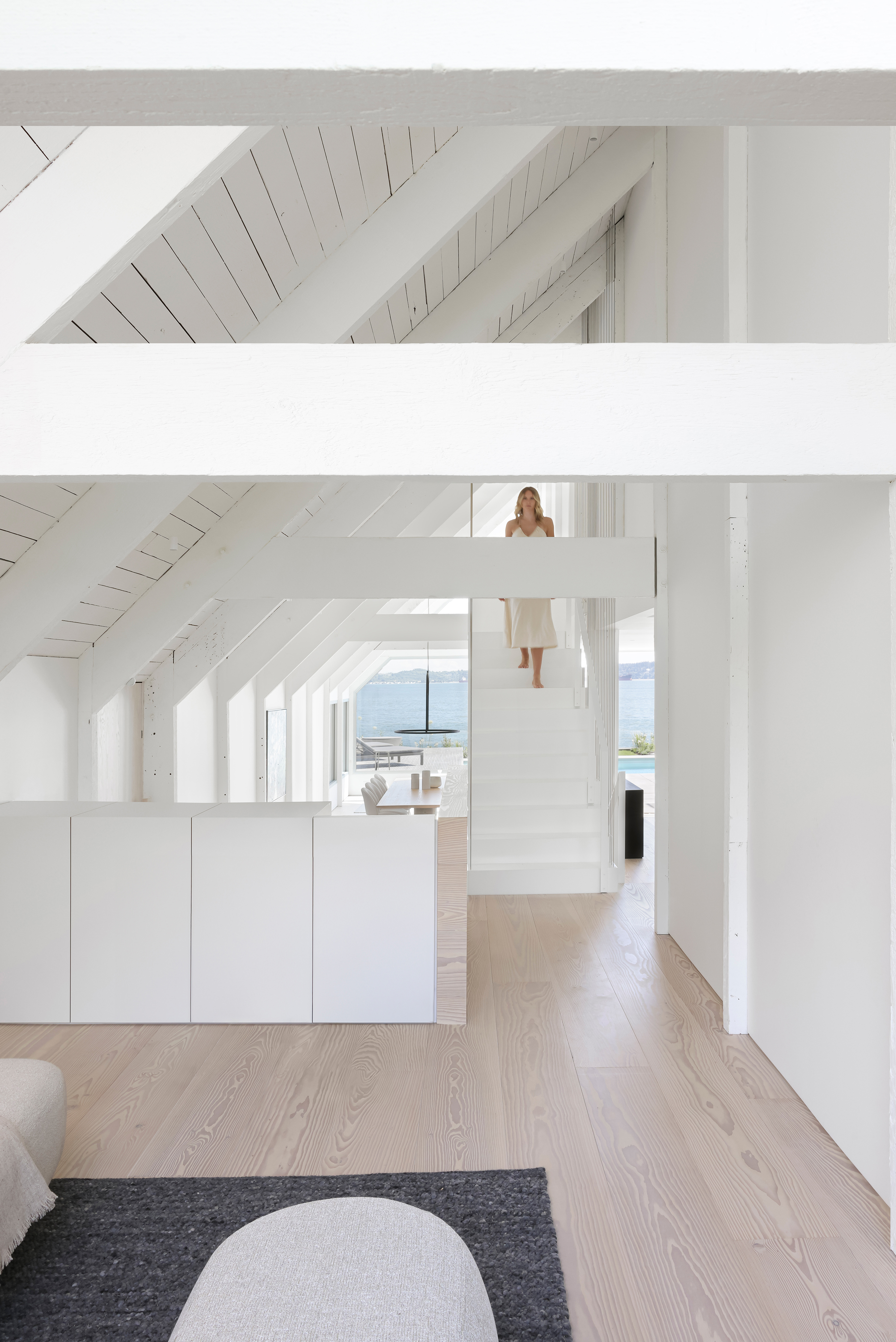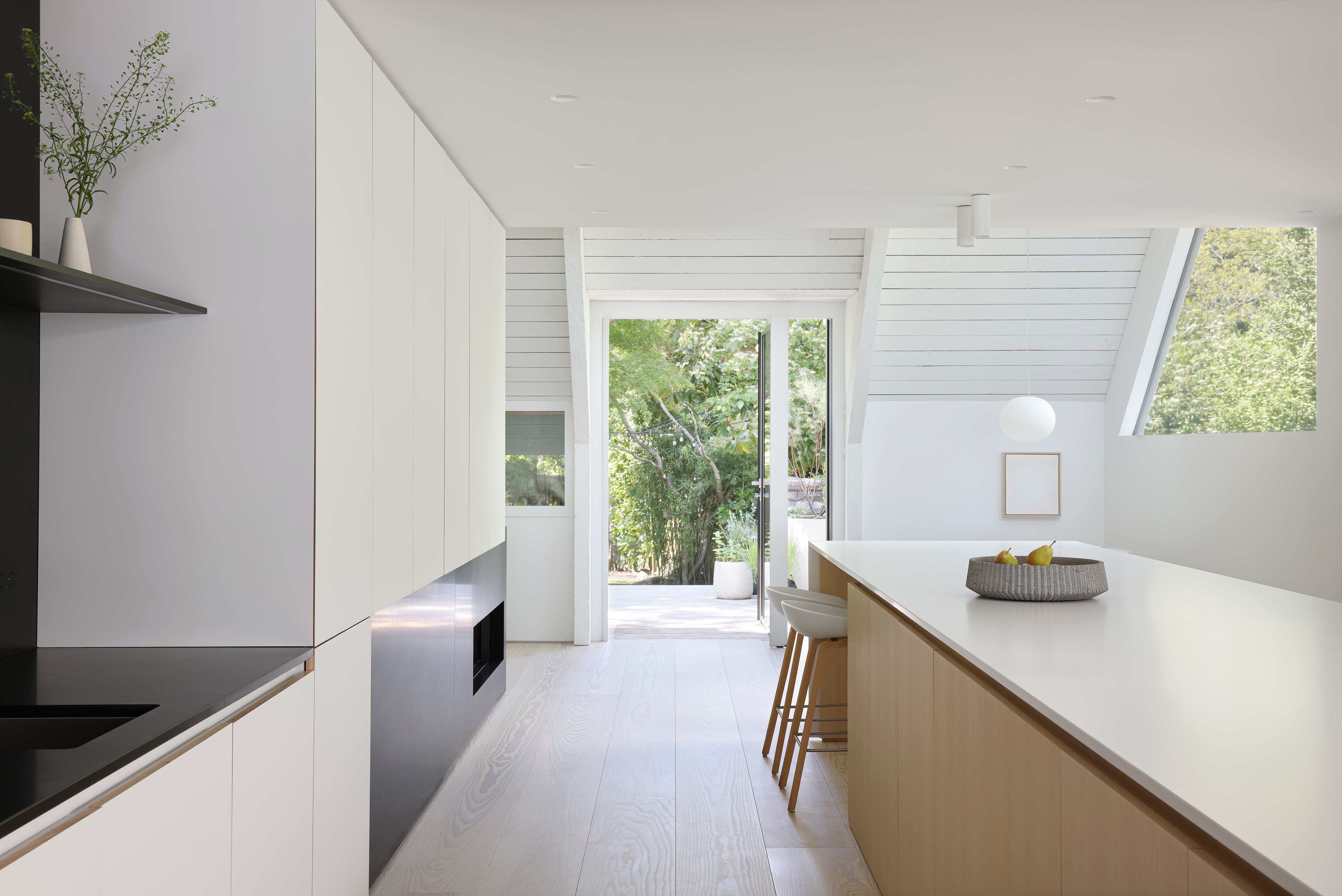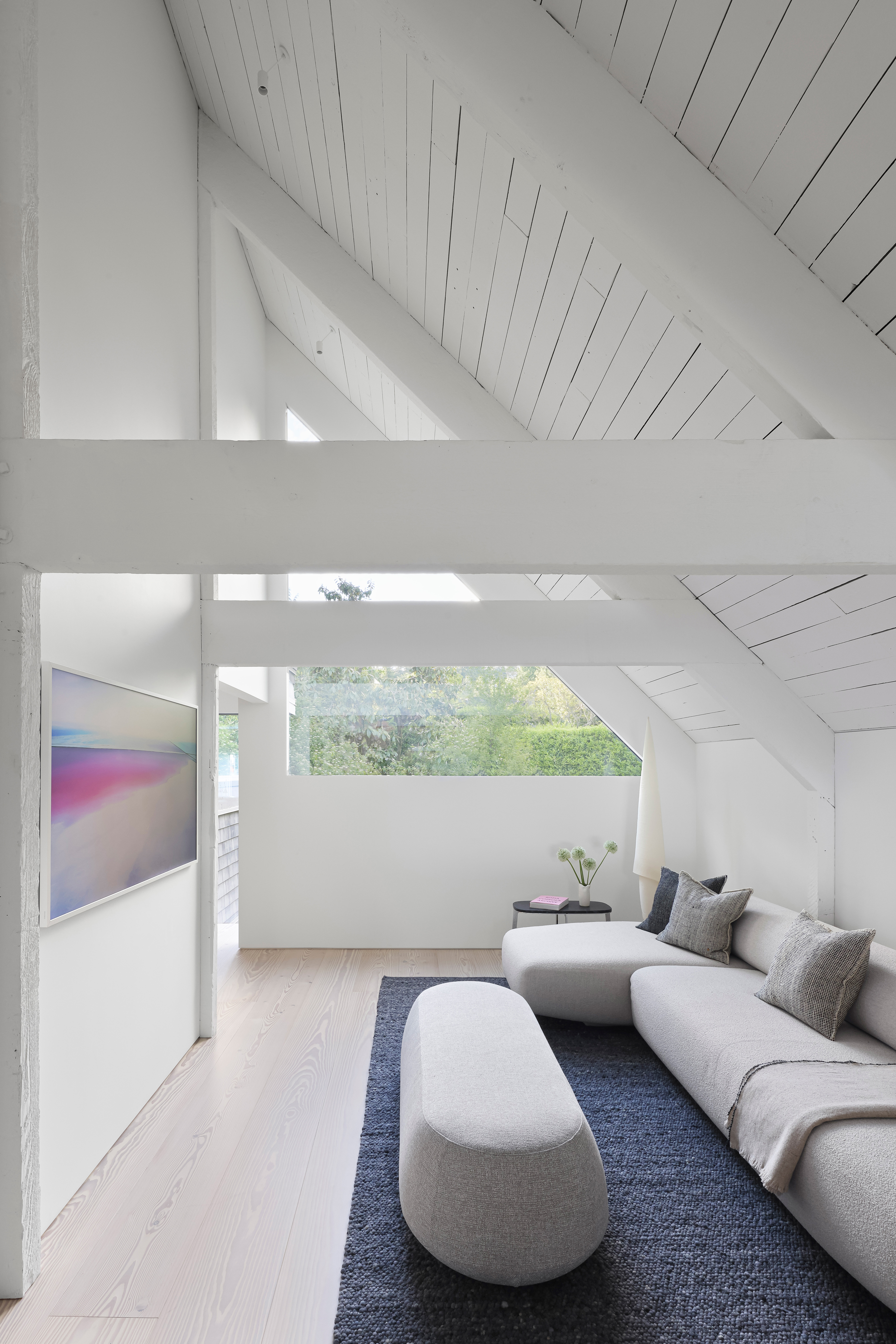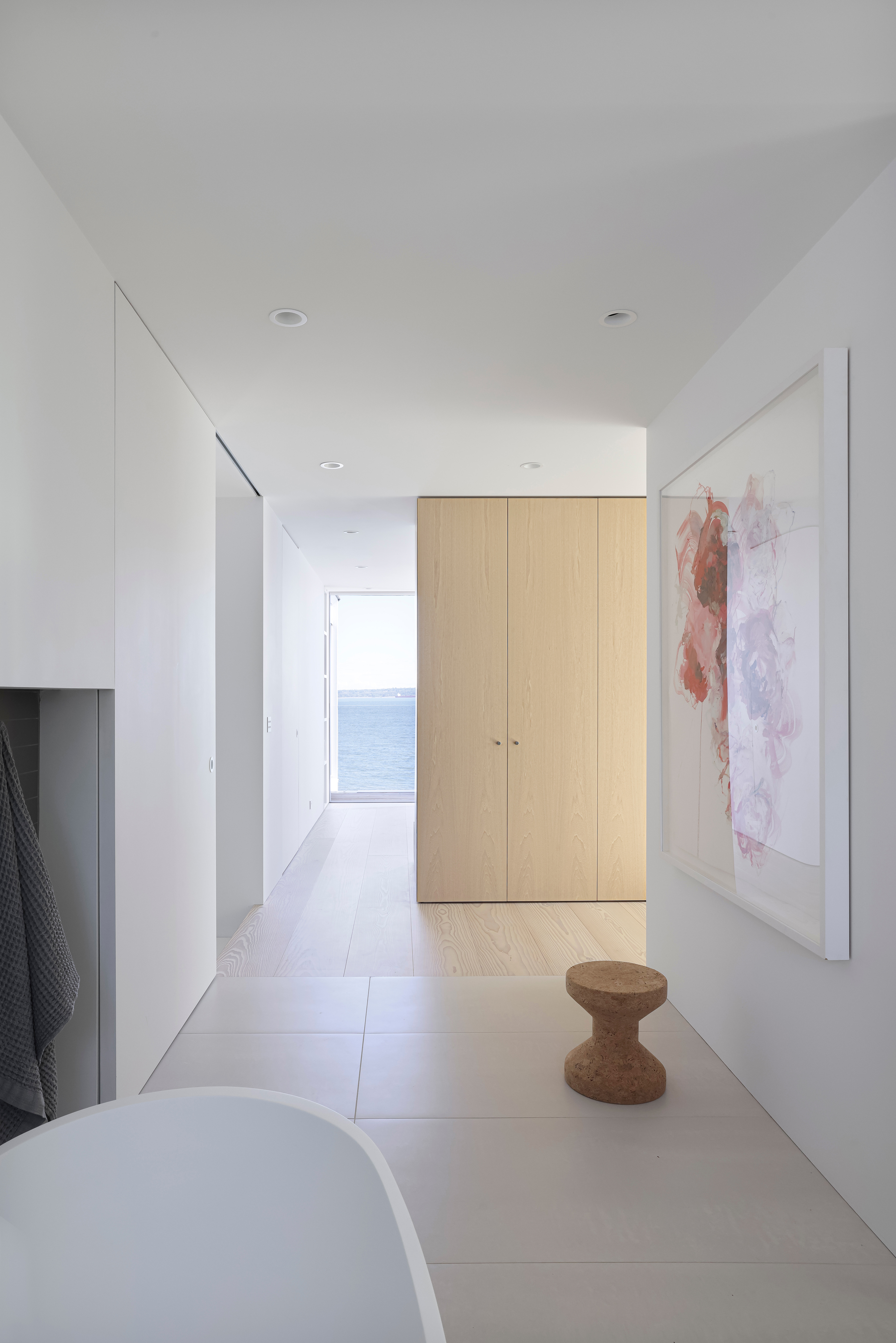SHORT DESCRIPTION
Situated on a long, narrow beachfront site, the reDEW House reclaims the clarity of its original architectural intent by removing layers of past renovations. Initially designed in 1969 by Daniel Evan White (DEW), the house has been carefully reinterpreted to honor its modernist roots while integrating the client’s priorities and the comforts of contemporary living. The interior was gutted and pared back to its heavy timber post-and-beam structure, allowing spaces to open fluidly from the north side through to the ocean-facing south. A kitchen, eating nook, and TV room transition into a sunken dining and living area, culminating in a new sitting zone along the south wall. Large sliding glass doors extend the interior seamlessly onto a patio and pool, reinforcing the home’s pavilion-like quality - attuned to shifting light, seasons, and ocean breezes. At the center of the plan, a suspended staircase hovers above the entry and dining area. With its slender steel profile, the stair is visually light against the heavy timber framework, yet sculptural in presence, adding a quiet intrigue to the space. The stair ascends to the new primary bedroom and ensuite. While the custom-designed bed occupies the most privileged position in the space, directly facing the water, the shower and free-standing tub behind are carefully positioned on either side, each sharing ocean views. Spaces are fluid on this floor yet clearly defined for maximum efficiency and function On the exterior, all entry points have been reimagined as subtle insertions within the original structure, playing on the dialogue between old and new. The main entry threshold is marked by a deep steel canopy, concrete steps, and a six-foot-wide door set between existing timber columns.

